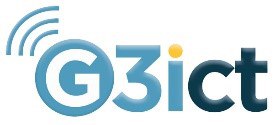Disdata: The Disaggregation of Disability Data
Posted on November 02, 2022

Director of Research, G3ict
On October 28th, G3ict participated in a fireside chat at the World Ethical Data Forum (WEDF). According to its website, “The World Ethical Data Forum is the only event in the world that embraces the full range of interrelated issues around the use and future of data.” The title of the WEDF-G3ict fireside chat was, “Disdata: The Disaggregation of Disability Data.”
What does data disaggregation mean?
Disaggregated data refers to the separation of compiled information into smaller units to help clarify any underlying trends and patterns. Compiled data may come from multiple sources (ex. – the public/private sectors, national/international organizations) and have multiple “dimensions.” To improve understanding of a situation, the data is grouped by dimensions, such as disability, age, sex, geographic area, education, ethnicity, or other socioeconomic variables.
Why is disability data disaggregation important? What are a few examples?
Over the past 40 years, policymakers and advocates have increasingly tried to measure the status of people with disabilities compared with others in our society. They want to know if the lives of people with disabilities have improved since the adoption of global initiatives (e.g., CRPD of 2006, SDG of 2015- 2030, Decade of Healthy Aging 2021-2030), or passage of country-wide legislation (e.g., ADA of 1996). In addition to measuring overall status, various efforts are now being undertaken to try to develop and use disaggregated disability data to monitor the effectiveness of such global initiatives, country-specific laws, associated programs, and their desired impacts on people with disabilities. Two examples illustrate the importance of disaggregated disability data: public health and public education.
- Public health, When a pandemic like Covid-19 occurs, timely, open, and reliable disaggregated data is critical to generating valuable information for decision-making in real time. An effective response to COVID-19 requires that that public health professionals and characterize the factors that slow or speed up transmission and the populations that are most vulnerable, particularly people with disabilities. For instance, to determine if an intervention (e.g., mass self-screening) is effective, we need to know what proportion of the population has been tested. COVID-19 highlights the importance of data disaggregation for allocating limited health resources and policy planning during and after the crisis. Hospitalization and mortality rates for COVID19 vary greatly, so accurate population-level data is imperative for determining the relative size of each vulnerable group. These proportions are then used in models to estimate the resource requirements of any given hospital. Similarly, as countries begin to loosen physical-distancing measures, disaggregated data analysis permits governments to adjust guidelines according to relative risks, thereby shielding the most vulnerable groups (i.e., persons with disabilities),
- Public education, Disaggregating student data into subpopulations helps schools and communities plan appropriate programs, decide which evidence-based interventions to select (i.e., those that have they been evaluated with the target population), use limited resources where they are needed most, and see important trends in behavior and achievement. Disaggregated (disability) student data also provides a view into the effectiveness and equity of an intervention program and ways to view students’ achievement measures. For example, Is there a difference in outcomes among students who participate in a particular evidence-based intervention? Are these students in particular grades or with certain teachers performing better, on average, than other grades? Are high socio-economic status students overrepresented in accessing and receiving services that result in desired results?
What Are the Challenges to Disability Data Disaggregation?
There are a number of challenges and obstacles. Here are some:
- Lack of available, high-quality, and reliable data in general;
- Data that is collected but that is not integrated, for example from the local up to national levels;
- Data privacy and security, particularly by people who do not want to risk sharing their sensitive personal health or financial information;
- Inaccessible technology products and services;
- Inaccessible digital information and content;
- Costly nature of adopting or adapting disaggregated disability data methodology, instrumentation, collection, etc.; and
- Limited capacity, know-how, or resources, to implement new disaggregation initiatives.
What Is the Digital Accessibility Rights Evaluation (DARE) Index?
Unrestricted access to digital devices, contents, information, and services is a necessary condition for persons with disabilities to enjoy their full rights. Article 9 of the Convention on the Rights of Persons with Disabilities (CRPD) obligates its States Parties to ensure that information and communication technologies, which support everything digital, are made accessible.
The DARE Index was created by G3ict to provide a global benchmark for governments, advocates, and private sector organizations to assess their progress and identify opportunities in promoting and implementing digital accessibility. The DARE Index measures three categories of variables in each country: country commitments (legal, regulatory, policies, and programs), country capacity to implement (organization, processes, resources), and actual digital accessibility outcomes for persons with disabilities in ten areas of products and services. This three steps analysis – commitments – capacity to implement – outcomes, is consistent with Human Rights monitoring principles and allows for useful gap analysis and linkages between variables.
Because there are no consistent sources of data available around the world on digital accessibility, persons with disabilities are in the best position to assess and report on digital accessibility matters. To address this disability data disaggregation gap, then, G3ict collects digital accessibility data in close cooperation with Disabled Peoples’ International (DPI). DPI research panel members are identified in each country and are responsible to provide data on their own country. When DPI does not have local representatives available, G3ict calls on other advocacy organizations or accessibility experts. For cross-tabulation purposes, G3ict analysts use United Nations, World Bank, and IMF country classifications.





























